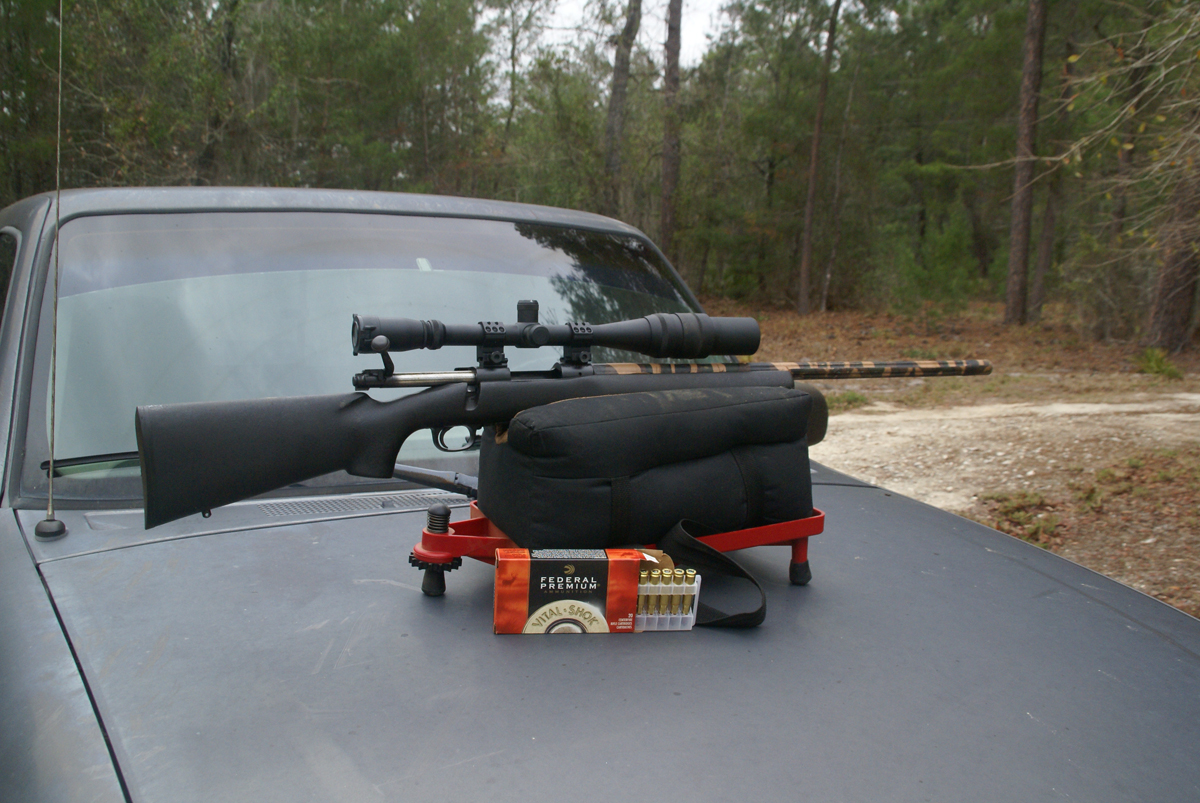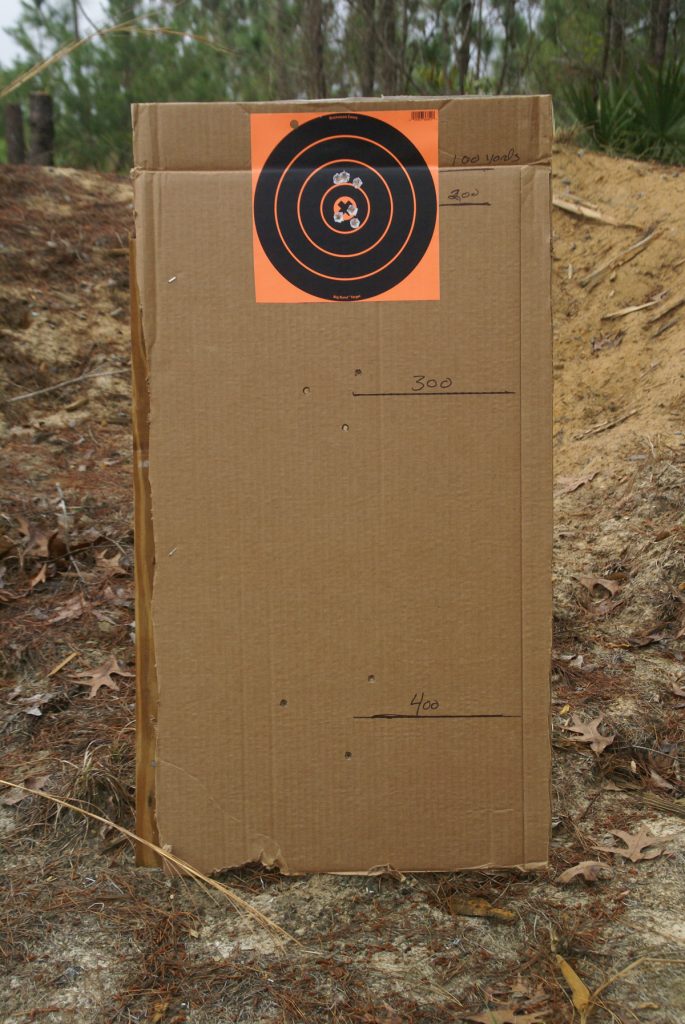June 10, 2016
By Chris Christian
Sighting in a deer rifle is simple, if you do it right.
 The Hughes Ballistic Shooting Bag can make any stable surface into a solid and adjustable rifle rest.
The Hughes Ballistic Shooting Bag can make any stable surface into a solid and adjustable rifle rest.
The preseason “sight in session” is ritual for many hunters. For some, it's a quick, simple, and inexpensive affair. For others, it can be a lengthy and frustrating process that burns up a lot of expensive ammunition.
The later doesn't have to be the case. A simple step-by-step procedure can put a properly functioning rifle on the money in under an hour, and with less than 12 rounds of ammo.
Step 1: Get a solid rifle rest. Zeroing a rifle isn't a test of the shooter's skill. It's just a matter of mechanically setting the Point Of Impact (POI) on the rifle. That requires as much of the human element be removed from the firing process as is possible. Resting the forearm on a couple of stacked sand bags while the shooter sits upright with the gun butt wobbling in space doesn't do that. Instead, get a rest that allows the shooter to center the sights on the target, remove their hands from the gun, and have the sights remain on the target. Achieve that and the only human element is the trigger press, and very slight gun movement to center the crosshairs.
 < A 200-yard zero trajectory from a 165-grain .308 Winchester round, similar for others in the velocity range.
< A 200-yard zero trajectory from a 165-grain .308 Winchester round, similar for others in the velocity range.
This can be accomplished with a sand bag under the forearm and a sand bag under the buttstock, if the rear bag can be “molded” to position the gun. A bipod can be used on the front but it needs to be cushioned. Placing any gun against a hard object will normally cause it to shoot away from that object. A bipod on a shooting bench is a hard object against a hard object, and vertical stringing often results. Place a folded bath towel under the bipod to cushion it and vertical stringing disappears. Another option is what is commonly called a “long bag.” The Hughes Ballistic Shooting Bag is one example. It fully supports the entire forearm and holds the gun on target. A base tray holds the bag and can be adjusted for windage and elevation. It can turn even a pick up truck hood into a rock steady rest.
Step 2: Take your time. Fire a three-round group and let the barrel cool before the next group. A hot barrel can spread groups, leaving the shooter to chase bullet holes around the target. Given the high temperatures during the August/September “sight in” season, 10 minutes between groups is not too much time. Pounding rounds through a hot barrel is a good way to burn expensive ammo without achieving positive results.
Step 3: Carry a ruler. Scope click adjustments are measured in fractions of an inch. A ¼-inch scope moves the POI .25 inches at 100 yards, requiring four clicks to move it one-inch at that range (or two inches at 200 yards, etc.). Some scopes use 1/3 or 1/8 clicks. If your group is off the mark, it's hard to “eyeball” the exact distance. A ruler makes it easy. Measure the exact distance from the group center, do the math, make the full adjustment, and shoot another group to fine tune.
Step 4: Pick a distance. If you've installed a new scope for this season do your initial sight-in at 25 yards. This quickly gets you on the paper. Fine tune at 200 yards. This is an ideal sight-in distance for Florida hunters.
With a 200-yard zero, the common deer hunting calibers in the 2,700-2,900 foot per second (fps) range (this includes the .243 Win, 6mm Rem, .260 Rem, 7mm-08, 308 Win and .30-06) will be approximately 1.7 to 2 inches high at 100 yards, 4 to 5 inches low at 250, 7.5 to 9 inches low at 300 and 21 to 25 inches low at 400. Those rounds in the 3,000-3,300 fps range (which includes the .25-06, .280 Rem, .270 Win, .264 Win Mag, 7mm Rem Mag and .300 Win Mag) will be approximately 1.3 to 1.5 inches high at 100, 2 to 3 inches low at 250, 6 to 7 inches low at 300, and 17 to 19 inches low at 400. On a broadside shot the vital heart/lung area on a Florida deer is a circle of about 12 inches.
Sight it right, and that 12-inch circle gets much easier to hit. FS
First Published Florida Sportsman Oct. 2012

